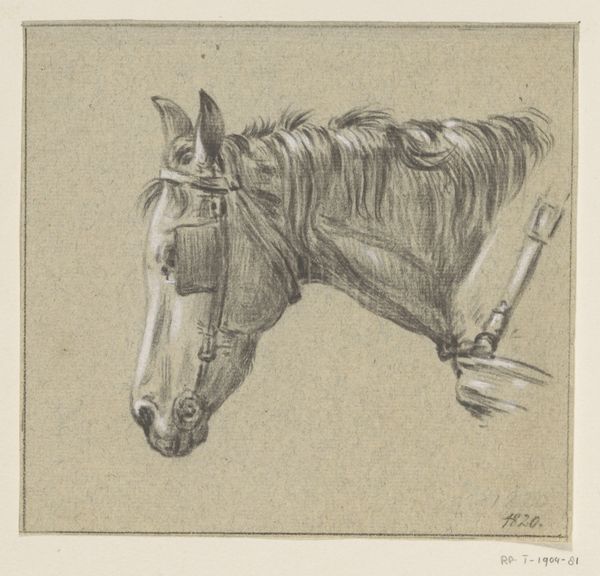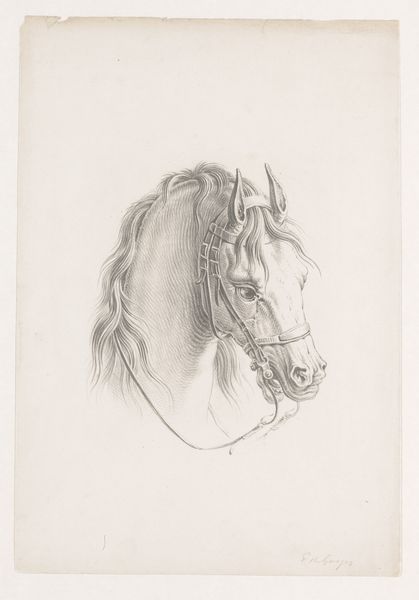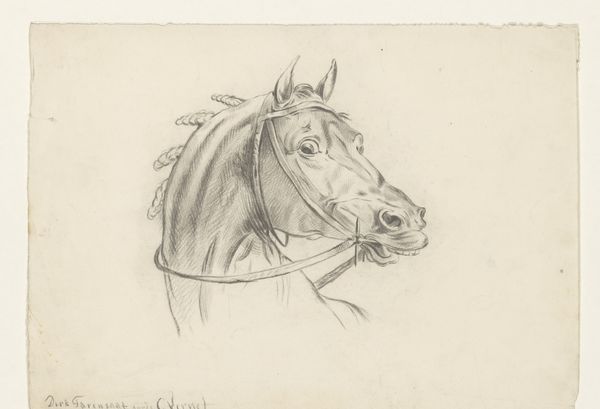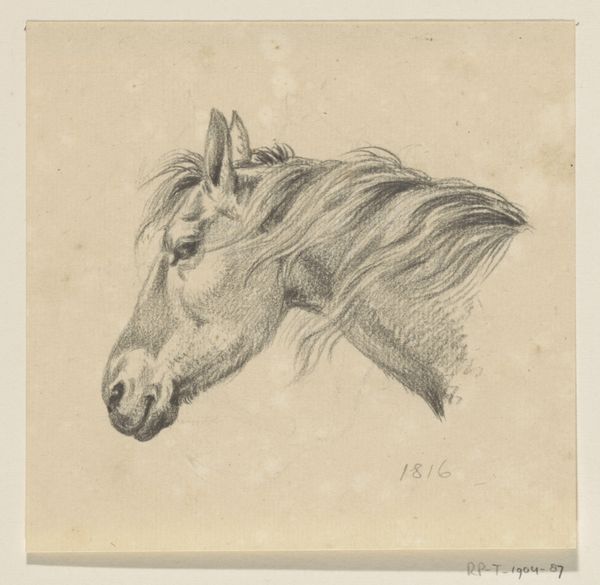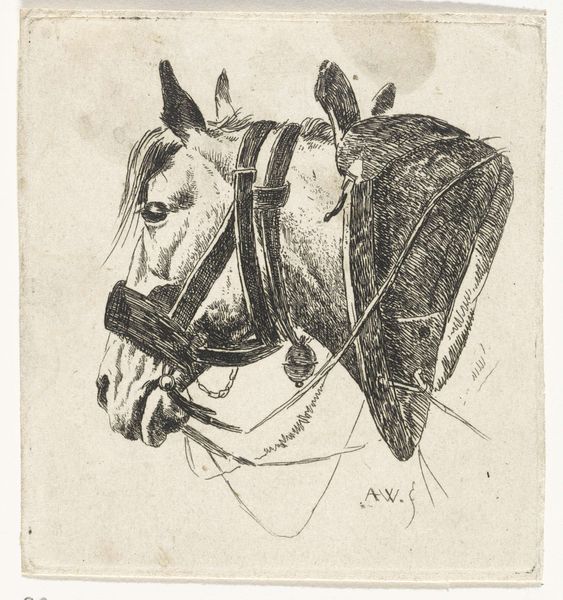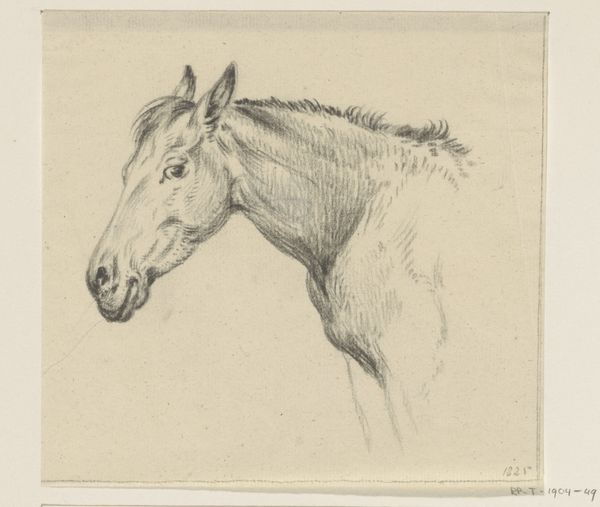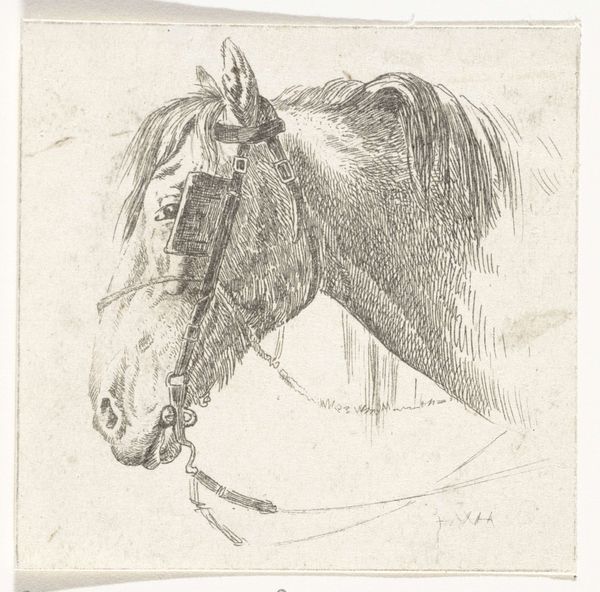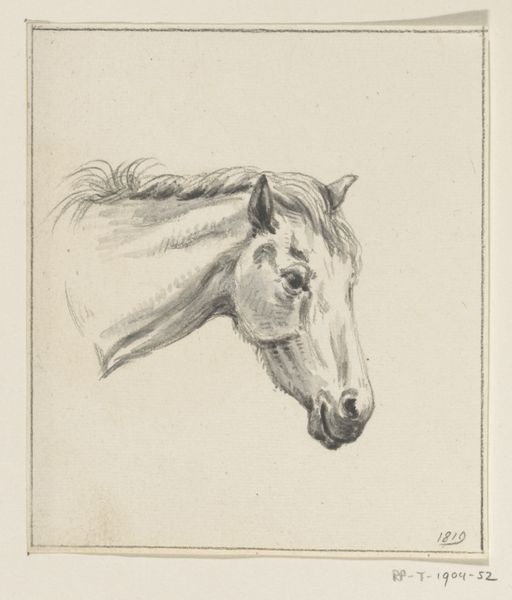
drawing, pencil
#
portrait
#
drawing
#
pencil
#
horse
#
realism
Dimensions: height 245 mm, width 310 mm
Copyright: Rijks Museum: Open Domain
Editor: Here we have "Horse Head with Bridle," a pencil drawing by Carel Christiaan Antony Last, created sometime between 1834 and 1850. I’m struck by the intense gaze and the weight of the bridle; it makes me wonder about the horse’s role and treatment. How do you interpret this work? Curator: It's a compelling image. Last's realism is undeniable, but I see more than just a portrait. This drawing speaks to the power dynamics inherent in human-animal relationships. Consider the era: the mid-19th century was a period of increasing industrialization and reliance on animals for labor and transportation. The bridle, a symbol of control, is meticulously rendered, highlighting that relationship. Editor: So, you see the bridle as representing not just control, but a potentially exploitative relationship? Curator: Exactly. And what does it say about our perception of animals within societal structures? The artist meticulously captures the detail of the horse’s face, giving him character, while at the same time showcasing an animal placed in a role for the service of humans. Consider also, for whom was this work intended? How does the viewer engage with images of animals during this time and ours? Editor: That's fascinating. I hadn’t considered the social implications. The artistic skill is evident, but understanding the context shifts the work from a mere study to a commentary. Curator: Precisely. By situating this drawing within its historical and social context, we can have a richer understanding of not just the artwork, but also our ongoing relationship with animals. Editor: I see the drawing with entirely fresh eyes now, thank you! Curator: My pleasure, context transforms perception, every time!
Comments
No comments
Be the first to comment and join the conversation on the ultimate creative platform.



